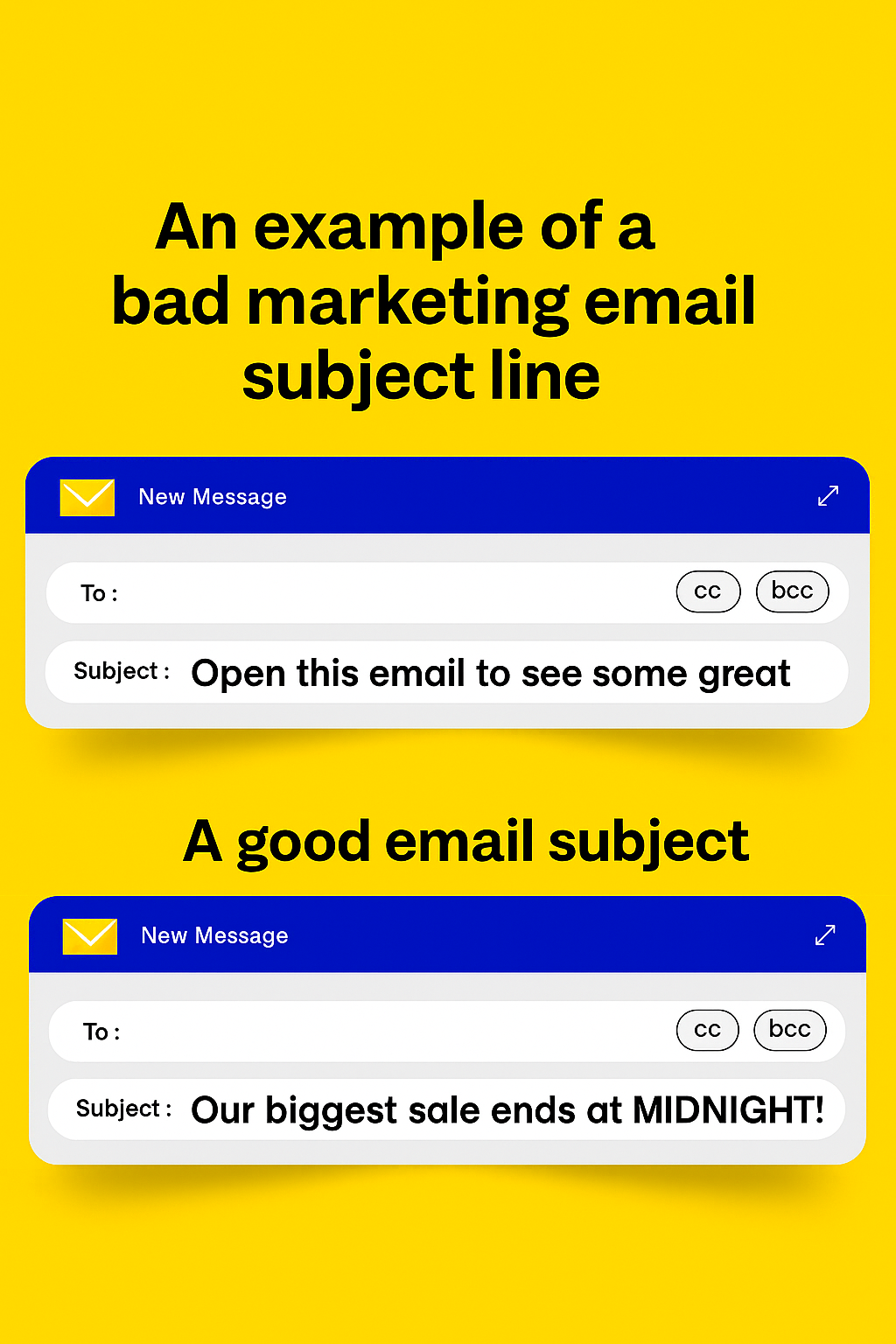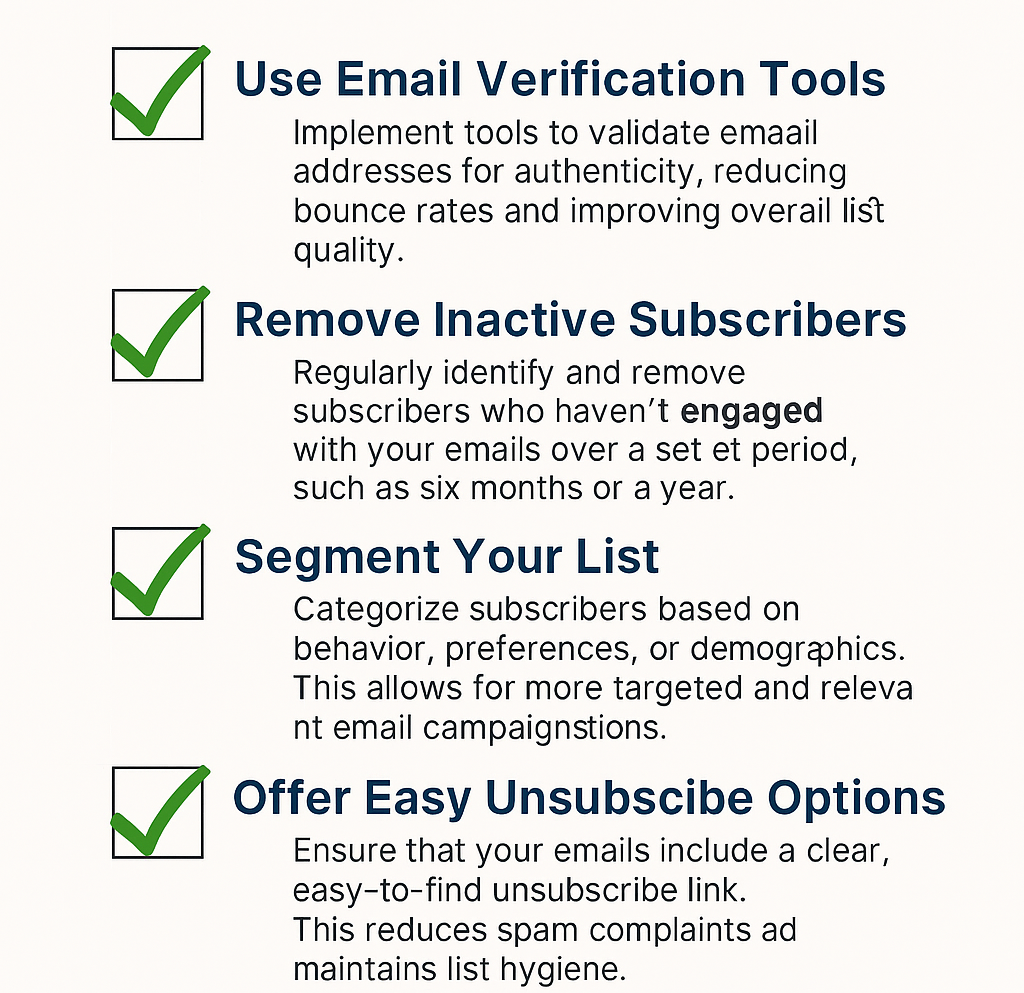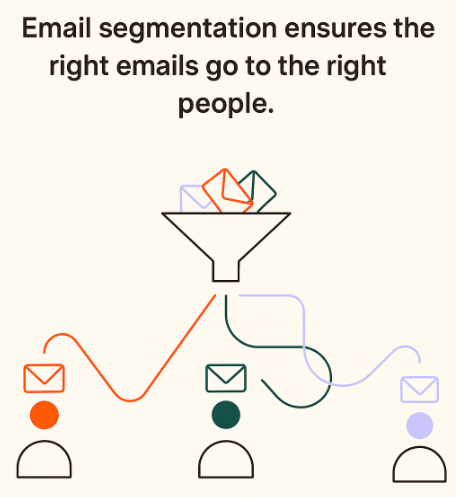
Understanding What is a Good Click Rate for Email Marketing Success
Understanding What is a Good Click Rate for Email Marketing Success
To maximise your results, it’s essential to understand the fundamentals of email marketing and how it fits into your overall digital strategy. Email marketing remains one of the most effective channels for engaging your audience, nurturing leads, and driving conversions. By consistently delivering valuable content directly to subscribers’ inboxes, you can build lasting relationships and encourage repeat business.
When developing your email marketing strategy, focus on best practices such as segmenting your audience, personalising your messages, and optimising send times. Regularly reviewing your campaign results—like open rates and click-through rates—will help you identify what’s working and where you can improve. By making data-driven adjustments, you’ll ensure your email marketing efforts continue to deliver measurable business growth.
The Anatomy of Click Rate
Click rate, often called click-through rate (CTR), simply measures how many subscribers clicked a link in your email compared to how many total emails were delivered. It cuts through mere visibility (opens) and hints at genuine engagement. Unlike open rate, which became less reliable with Apple’s Mail Privacy Protection and similar privacy features, click rate requires your audience to take tangible action.
Here’s a straightforward formula:
| Metric | How It’s Calculated |
|---|---|
| Click Rate (Click-Through) | (Number of Unique Clicks / Number of Delivered Emails) x 100 |
So, if you deliver an email to 2,000 people and 70 clicked at least one link, your click rate is 3.5%. This number represents much more than a simple stat—it’s a measure of relevance, value, and trust.
So… What’s “Good” Anyway?
No matter how often someone says, “it depends,” everyone still wants a number. Industry reports and analysts tend to show global average click rates hovering between 2% and 4%.
But averages obscure the quirks and opportunities hiding in different industries, regions, and audience segments. Here’s a quick peek at different sectors, using global benchmarks as a rough guide:
| Industry | Average Click Rate (%) |
|---|---|
| Retail / E-Commerce | 2. – 2.6 |
| Hospitality / Travel | 2.3 – 3.4 |
| Nonprofit / Charity | 2.7 – 4.3 |
| Technology / Software | 2.6 – 4.1 |
| Education | 3. – 4.9 |
| Finance / Banking | 2.1 – 3.2 |
| Media / Publishing | 3.1 – 4.8 |
| Healthcare | 2.5 – 3.6 |
| Real Estate | 2.2 – 3. |
| Professional Services | 2.4 – 3.5 |
| Government | 2.8 – 4. |
| Entertainment / Events | 2. – 3.2 |
| Automotive | 2.1 – 2.9 |
| Consumer Services | 2.3 – 3.3 |
| Food & Beverage | 2. – 2.8 |
| Insurance | 2.2 – 3.1 |
| Telecommunications | 2.1 – 2.7 |
| Utilities / Energy | 2. – 2.6 |
A retail store might celebrate a 2.5% rate, while an education provider may feel concerned if theirs drops beneath 4%. The catch? Your context determines what’s truly good.
A few guiding questions:
- What are your open and conversion rates like?
- How engaged is your list (age, frequency of sends, source of subscribers)?
- How relevant is your content to your audience?
Variables That Shape Success
Performance isn’t just down to luck or template design. Multiple forces will push your click rate up or down:
Audience Expectations
Did your subscribers sign up hoping for educational content but only receive sales pitches? People are quick to tune out if expectations and delivery don’t match. Lists built through genuine interest fare better than those gathered through contests or purchased sources.
The Art of the Subject Line
A compelling subject line earns you an open. But promises made there must connect with the offer or story inside. Mismatches kill trust and lower engagement.

Email Content and Design
Short, scannable layouts with attractive calls to action (CTAs) outperform wordy or cluttered emails. Readers decide whether to click within seconds, so clarity wins.
Consider:
- Are your CTAs visually distinct and specific?
- Is mobile optimisation done well?
- Are images loading quickly and displaying properly?
Example of a good email template:

Image Source: Mailmodo
List Health
Bounce rates, list churn, and list source all matter. Cleaning inactive subscribers, identifying spam traps, and using confirmed opt-ins can all affect results.

Time and Frequency
Too many emails lead to fatigue, too few and you risk being forgotten. Testing different send times and frequencies can reveal surprising shifts in engagement.
Unlocking Higher Click Rates
Improving your results tends not to be about wholesale reinvention, but about ongoing tweaks, rigorous testing, and putting your audience first.
Smart Segmentation
One of the quickest ways to lift engagement is by segmenting your list. Rather than sending a one-size-fits-all message, split your audience by interest, region, buying behaviour, past engagement, or lifecycle stage.
Studies show that segmented campaigns can result in up to a 50% higher click rate than non-segmented ones.

Relevant, Value-Packed Content
Tailoring content to the actual needs and wants of your audience keeps them clicking. Whether it’s practical advice, exclusive offers, or simply content that feels created just for them, the difference is obvious.
Here are some approaches to consider:
- Use past behaviour to recommend content or products.
- Send personalised stories, offers, or invitations.
- Test adding personalisation beyond just first-name tags.
Testing and Refinement
Regular A/B testing helps you identify what resonates. Every significant element is open for improvement:
- Email subject lines and preview text
- Button text and placement
- Images or GIF usage
- Length and tone of your content
Document what works across each segment or campaign type and apply those learnings systematically.
Focus on One Clear CTA
Multiple competing asks make the choice overwhelming. Give your campaign a singular, obvious action—read the article, shop the sale, RSVP—so people don’t have to guess what’s most important.
When Click Rate Doesn’t Tell the Whole Story
While click rate is an outstanding “at a glance” sign of health, isolating it from other metrics can be misleading.
A few scenarios to illustrate:
- An exceptionally high click rate, but low conversions, could mean there’s a disconnect between email and landing page.
- A modest click rate but high average order value might point to fewer, but highly engaged, clicks.
- Very low click rates may point at delivery issues, not just content relevance.
Tracking clicks alongside conversions, unsubscribe rates, and even inbox placement gives you a fuller picture of what’s working.
Beyond Click Rate: Unlocking the Full Picture of Email Engagement
Understanding click rate is just the beginning—several related metrics offer deeper insights into your email marketing performance. Open rate measures the percentage of recipients who open your email out of the total delivered, reflecting how effective your subject line, sender name, and send time are at grabbing attention. For example, if you send 1,000 emails and 250 are opened, your open rate is 25%. While a strong open rate signals initial interest, it doesn’t guarantee engagement with your content. That’s where Click-to-Open Rate (CTOR) comes in. CTOR reveals how persuasive your message and calls to action are by measuring the percentage of openers who actually click a link inside your email. For instance, if 200 people open the email and 40 click through, your CTOR is 20%. Unlike overall click rate, which is based on total deliveries, CTOR isolates true engagement among those who viewed your content. By understanding and optimising these interconnected metrics—click rate, open rate, and CTOR—you can more accurately identify what’s working, improve email relevance, and drive stronger results from your campaigns.
Beyond Benchmarks: The Value of Your Own Data
While benchmarking versus industry averages is useful for a pulse check, your real benchmark sits within your own results. Focusing on continuous improvement over time will get you further than chasing a number from a different business model or location.
Start by tracking your monthly, quarterly, and annual averages. Flag spikes and dips, then dig into possible causes:
- Did you change your email template?
- Was a new segment introduced?
- Has your content strategy shifted?
This ongoing cycle of measure, adjust, and repeat is where lasting results lie.
Tips for Keeping Click Rate High
Success in email marketing isn’t a set-and-forget affair. High click rates tend to sustain when you combine creativity, user-centricity, and operational discipline.
Here’s a checklist worth revisiting:
- Use double opt-in to ensure genuine interest.
- Regularly review and prune inactive users from your list.
- Keep your designs mobile-friendly and accessible.
- Get straight to the point, especially in the opening lines.
- Offer real value in every campaign.
- Always measure, test, and refine—even what seems to work.
Measuring and Improving Email Marketing Performance
Evaluating the performance of your email marketing campaigns is essential for sustained growth and optimisation. Performance encompasses a range of metrics—including open rates, click rates, conversion rates, and unsubscribe rates—that together provide a comprehensive view of how well your emails are achieving their objectives.
To truly understand your campaign’s effectiveness, it’s important to go beyond surface-level metrics and track conversions, revenue generated, and long-term subscriber engagement. By regularly analysing these performance indicators, you can identify trends, uncover areas for improvement, and make data-driven decisions that enhance your results.
If you want to dive deeper into measuring and calculating conversion rates—a key indicator of email marketing performance—check out this detailed guide: How to Calculate Email Marketing Conversion Rates in 2025.
For expert support and tailored solutions to elevate your results, explore our comprehensive email marketing services.
Continually refining your approach based on performance data ensures your email marketing remains agile, relevant, and effective in driving your business goals.
The Bigger Picture
Great email marketing is about choosing the right metrics for your audience, business aims, and content strategy. Click rate provides a valuable insight, but it achieves its best when paired with everything you know about your subscribers and your goals.
Some of the most fascinating successes come when businesses step back from chasing a single benchmark and start treating every campaign as a chance to learn, iterate, and connect.
That’s what makes email tough to top: It’s a channel built for nuance, and for those willing to keep their focus sharp and their hearts on their readers, the rewards keep coming.
A good click rate is the start of better conversations—your audience is telling you when you’re on the right track. So keep listening and responding, and the results will follow.

